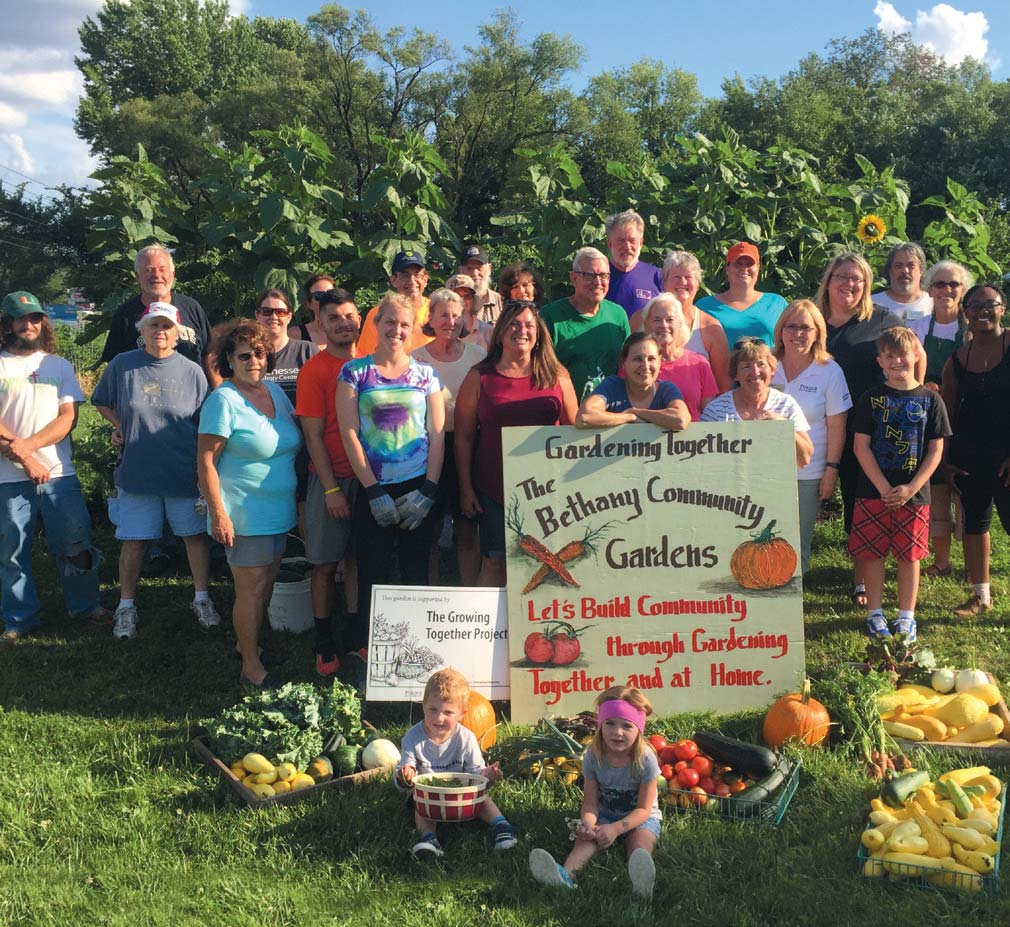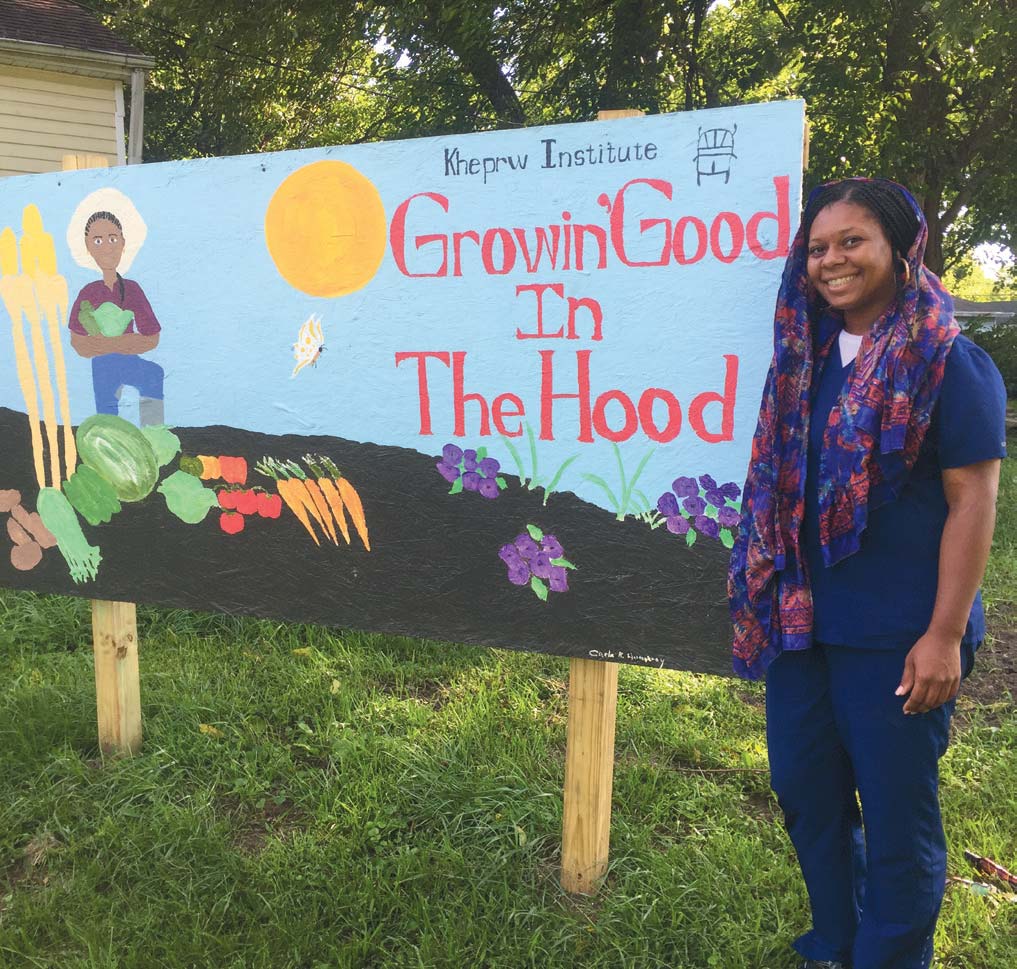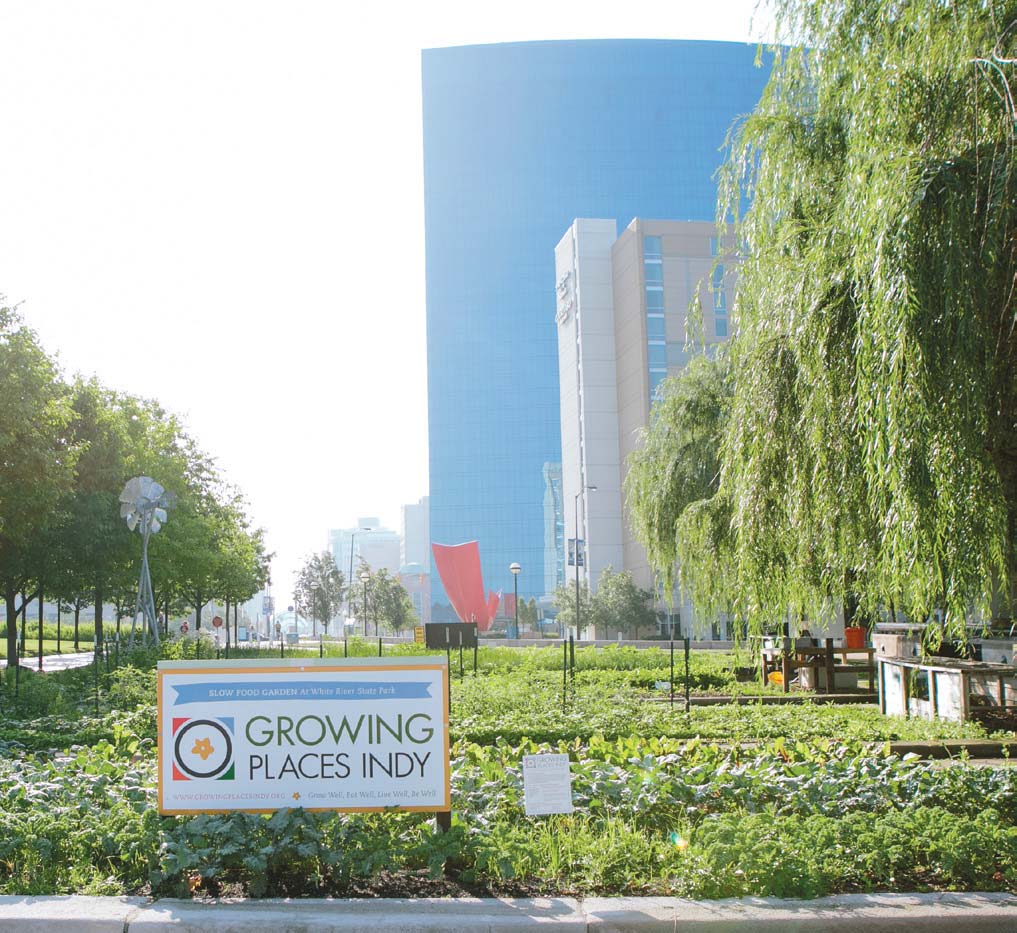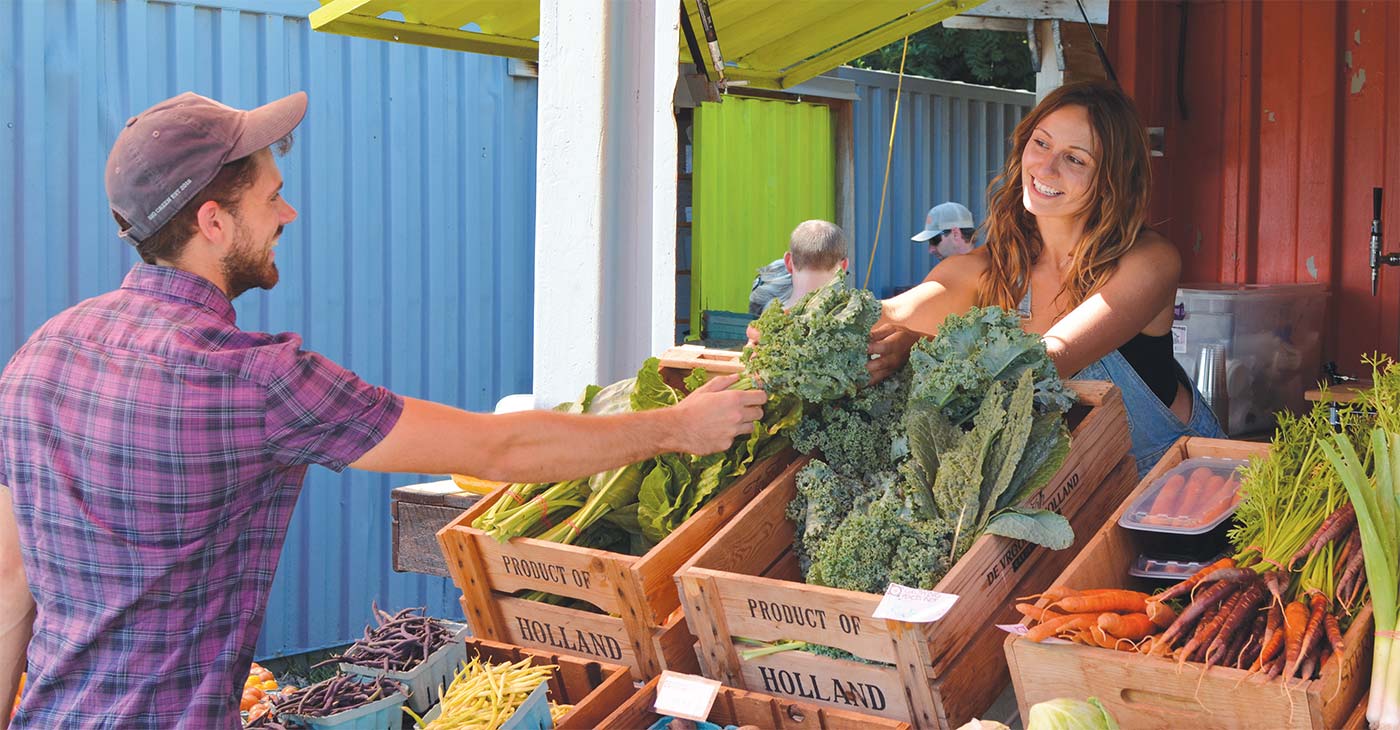Hatching New Plots
In 2012, Edible Indy took a look at community gardens and urban green spaces across central Indianapolis. As a new decade gets under way, we thought it might be interesting to revisit the topic and see how things have grown (so to speak) since then.
WHAT'S IN A NAME?
Community gardens in Indianapolis are just one component of the greater urban agriculture landscape. A “community garden” is a shared growing enterprise undertaken by a collective group of people who plant, maintain and harvest their own individual plots; “urban agriculture” can refer to any public or private growing effort in an inner-city or urban setting.
“Community gardens—including rooftop gardens, schoolyard gardens, backyard gardens and neighborhood gardens—are usually nonprofit endeavors that provide a sense of community and connection to the environment,” explains Executive Director Victoria Beaty of Growing Places Indy. “Urban agriculture, urban farming or urban gardening is the practice of cultivating, processing and distributing food in or around urban areas—very similar to community gardens, but on a larger scale.”
“Some projects refer to themselves as community gardens, but they’re really collective farm projects,” adds Amy Matthews, Urban Agriculture program assistant for Purdue Extension Marion County. “Bethany Community Gardens is one example where there are plots people can rent, and also a community effort where everyone works on a certain day and the output goes to food banks.”
At the time the original Edible Indy article appeared, there were around 50 urban community gardens in Center Township. According to Beaty, that number has grown to more than 150 community gardens and urban farms in the Indianapolis area. With support from Purdue Extension Marion County, Indy- Grown.com is constantly adding entries to a comprehensive map of market farms, community gardens, school gardens and educational facilities and nonprofit farms throughout Central Indiana.
“These categories each serve different purposes, and we need them all working together to create a vibrant urban ag community,” Matthews says. “Many successful garden projects going on right now are less than 5 years old. Growin’ Good in the Hood has gained a lot of traction, while the Burkhart Community Garden in Rocky Ripple is one of longest-established community gardens in town.”
One of the big challenges community gardens face is finding consistent support.
“It can be a struggle to fill all the spots and find people to do the necessary work to keep up the spaces,” Matthews says. “But projects like the community garden at Krannert Park, which was dormant for a while, are now experiencing a resurgence. It goes in cycles.”

photography: Bethany Community Gardens
WHY GARDEN?
The camaraderie that community gardening creates is as much an attraction as the edible output itself, especially for younger participants who get an education along the way.
“Community gardens give Indianapolis residents access to garden space they may not have otherwise,” Beaty says. “And, community gardens and urban farms can be influential contributors to fostering healthy communities.”
Improving access to fresh and local foods, increasing consumption of fruits and vegetables, and cultivating greater awareness about nutrition are just a few of the benefits community gardens offer, especially critical in neighborhoods that lack pathways to affordable, healthy food.
“About one in every five Marion County residents lives in a food desert, an estimated 196,000 people in the county,” Beaty notes. “These areas are usually low-income and lack food access; they’re generally areas where the closest retail grocery store is more than a mile away.”
The output from community gardens and urban farms benefits Indianapolis residents in a number of ways. As one of the oldest urban farms in the City of Indianapolis, Growing Places Indy provides fresh, local foods to area restaurants and food pantries, and to the community through the Indy Winter Farmers Market and a summer farm stand. Community gardeners can also enjoy the fruits of their own labors, share their produce with neighbors or donate what they grow to local food banks and other outlets.

photography: Growing Good in the Hood
WHAT TO GROW?
The personality of each community garden depends on the needs and preferences of those who tend it. When planning, Beaty says it’s important to keep in mind that some vegetables require more TLC than others.
“Selecting low-maintenance plants for community gardens is best, especially if you’re not able to be at the space daily,” she explains. “Some good choices include basil, kale, cucumbers, peppers and tomatoes.”
WHAT'S THE FUTURE HOLD?
Former Indianapolis Mayor Greg Ballard proposed an urban garden program back in 2012, but the project is not a focus for the city at present. However, current Mayor Joe Hogsett has prioritized the need to address food insecurity with Proposal 258, approved and passed in July 2019. The plan includes support for a food compass app, neighborhood food champions, a mobile grocery store and subsidized Lyft rides.

photography: Growing Places
WANT TO LEARN MORE?
Purdue Extension Marion County offers a year-long Urban Agriculture certificate program for anyone who wants to learn more about urban farming through a curriculum including classroom sessions, field workshops and online learning opportunities.
“Folks who have an idea they want to launch can take the class, network and get their plan together,” Matthews says. “The Lawrence Community Garden is just one example that’s come out of this program.” Find out more at Purdue.edu/dffs/urbanag. Care to lend your local community or urban garden a hand? There are many opportunities to participate throughout Central Indiana; visit growingplacesindy.org and indygrown.com for some suggestions on how and where you can volunteer. The Indy. Gov Office of Sustainability also maintains community gardens available to neighborhood residents at Eagle Creek Park and Tibbs Avenue; visit Indy.gov for more information.





